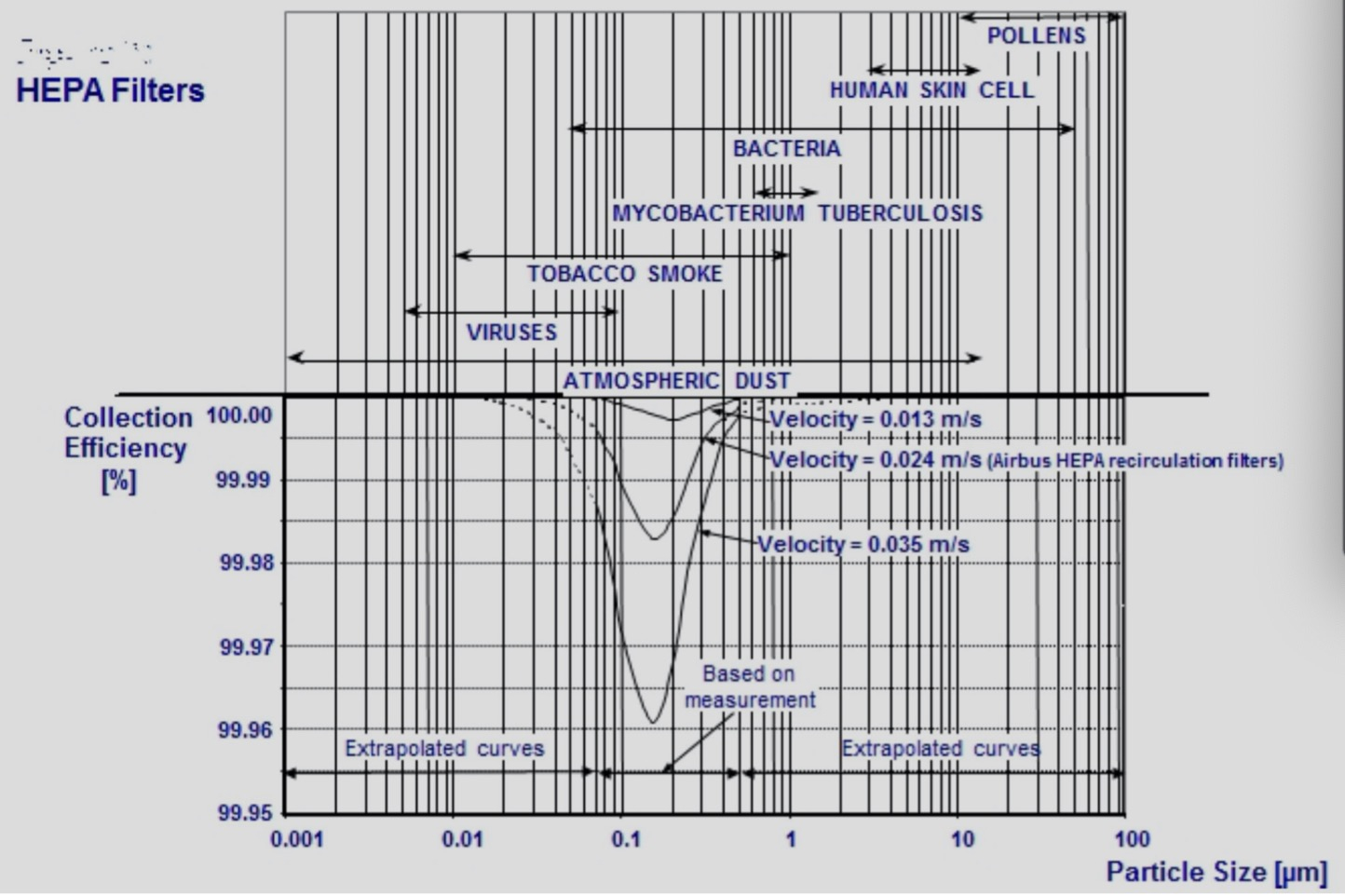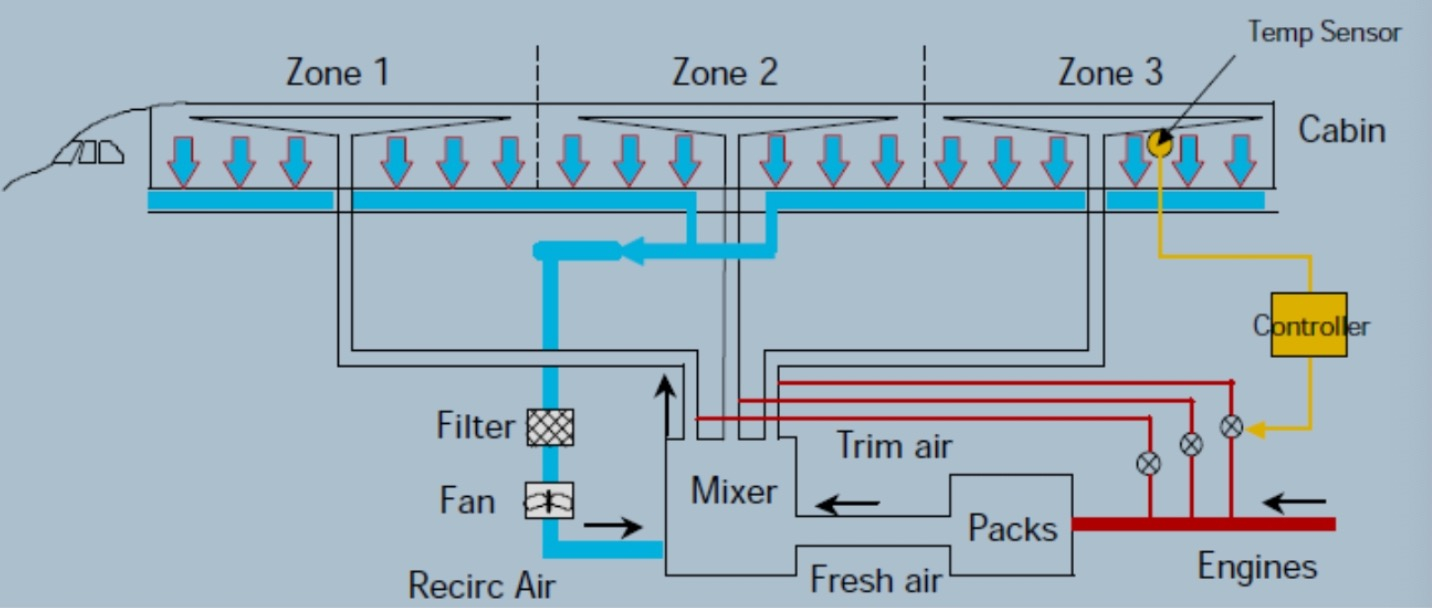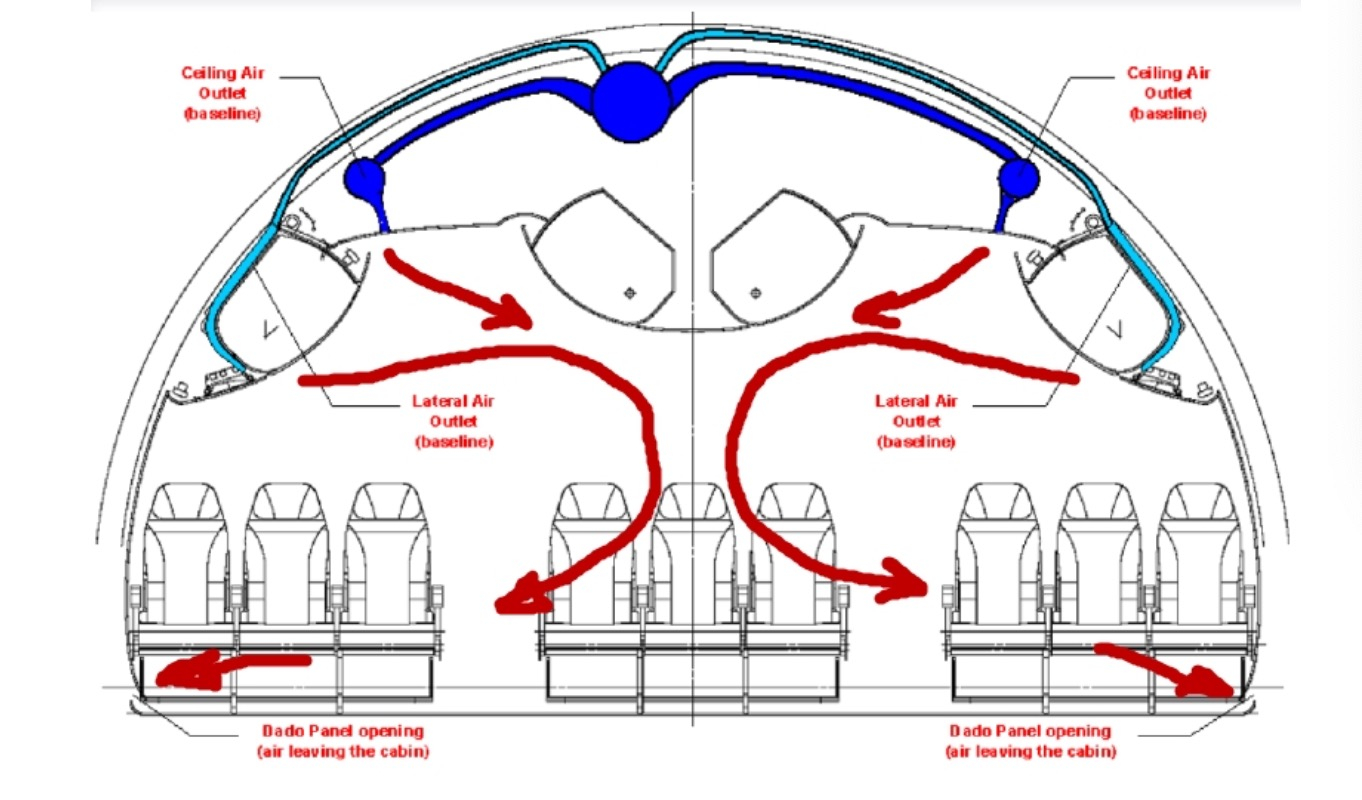As the extended national holiday approaching to the end on February 9, many travelers are planning to return to work in major cities in China. Their biggest concern is the danger of getting infected by the still raging NCP (Novel Coronavirus Pneumonia) along the way, especially while traveling inside an enclosed airplane cabin.
Here are some facts and advice given by airlines, airplane manufacturers, airports, and medical experts, which may help passengers to have a safe and comfortable trip.
Fact No.1: The airplane's ventilation system could filter 99.99% of virus
This is based on the fact that all the airplanes have ventilation systems with HEPA filters, which according to major airplane manufacturers like Boeing and Airbus, could be able to capture particles between 0.003 to 10 microns.
A virus is normally attached to droplets less than 150 microns, which enables the virus to float in the air. The chart below provided by Airbus shows the performance of a HEPA filter in capturing viruses and other particles.

The graph shows the capture efficiency of HEPA filters when facing different sizes of particles. /Photo by Airbus
The graph shows the capture efficiency of HEPA filters when facing different sizes of particles. /Photo by Airbus
The HEPA filters have been shown in tests to provide air that can meet the standards set for the hospital operating environment. In other words, more than 99.99% of the particles within the size range of typical viruses can be captured by this airplane-carried filter.
Fact No.2: The air inside an airplane will refresh every two to three minutes
The ventilation system can ensure the cabin air replaced every 20 to 30 times per hour. In this way, the air inside the airplane is a makeup of the fresh air and recirculated air, which will go through a mixer first and then be injected into the fuselage.
Passengers, therefore, are ensured to be in contact with fresh air. To help you better understand the airflow inside an airplane, here are the charts that can demonstrate the air routes inside an A320.

Cabin air will go through the filter first and then go back into the plane after combing with fresh air in the Mixer. /Photo by Airbus
Cabin air will go through the filter first and then go back into the plane after combing with fresh air in the Mixer. /Photo by Airbus
Since the breakout of NCP in Wuhan, The CAAC has asked airlines to upgrade their measures in ventilation, including maximizing the ventilation system power while in operation.
Other types of airplanes are similar to A320. The air is going from the ceiling to the floor while flowing vertically. This way can help reduce the spread of possible virus inside the cabin.

The two air outlets of A320 on both sides ensure the cabin air can go into full circulation. /Photo by Airbus
The two air outlets of A320 on both sides ensure the cabin air can go into full circulation. /Photo by Airbus
Some Q & As
What if someone was found having a fever in a flight?
The CAAC has required airlines to prepare emergency plans for such a situation. Flight crews are allowed to set up a temperature quarantine zone using the last three rows of seats in an airplane. Experts believe that the travel of the virus will be greatly diminished beyond three rows in a flight.
However, it is very likely that all the passengers and flight crews will be quarantined if an infection is confirmed on a flight. In China, anyone who has close contact with infected patients will be asked to self-quarantined for 14 days.
Will flight attendants become the source of infection?
Highly unlikely! The Airlines have upgrade protection measures on flight crews, especially on flight attendants. They have been asked to wear masks all the time during a flight. It is also required that all flight attendants sanitize their hands after touching wastes or possible contaminated material. Airlines are also reducing unnecessary cabin service to minimize the movement of flight attendants.
Will airports become the source of infection?
People entering the terminal must take body temperature; this applies to all airports in China currently. The ventilation and sterilization inside the terminal are at their maximum level and frequency. Locations such as the check-in desks are sanitized on a daily basis. All passengers are asked to wear masks to enter the terminal, and people must wear masks all the time, except form a temperature moment when passing through security checks.

The airflow inside an A350 shares a similar path within A320, going vertically from the ceiling to the floor, while minimizing the spread of possible virus inside the cabin. /Photo by Airbus
The airflow inside an A350 shares a similar path within A320, going vertically from the ceiling to the floor, while minimizing the spread of possible virus inside the cabin. /Photo by Airbus
Six suggestions from experts to safeguard your trip
1. Wear a mask all through the trip. It is now required to wear a mask to enter any terminal and board a plane in China. Wearing a mask is an effective way to protect you from getting infected. And if possible, prepare more than one mask on a long trip, and change it every four hours.
2. Bring disinfection products. Travelers could carry enough alcohol prep pad or disinfectant wet wipes. Other products, such as medicinal alcohol (purity of less than 70% only), can be packed in cosigned luggage.
3. Wash hands. Wash hands with running water, along with cleaning products.
4. Try not to leave your seat and walk around in the cabin. As the air in the cabin is flowing vertically, moving through the cabin will increase the chance of being infected if there are virus carriers on board.
5. Keep distance from others, and, if possible, sit separately.
6. Try not to eat anything because eating or drinking will require to remove the mask, which is not suggested. It is also not suggested to touch food with bare hands directly.